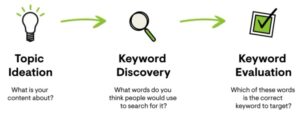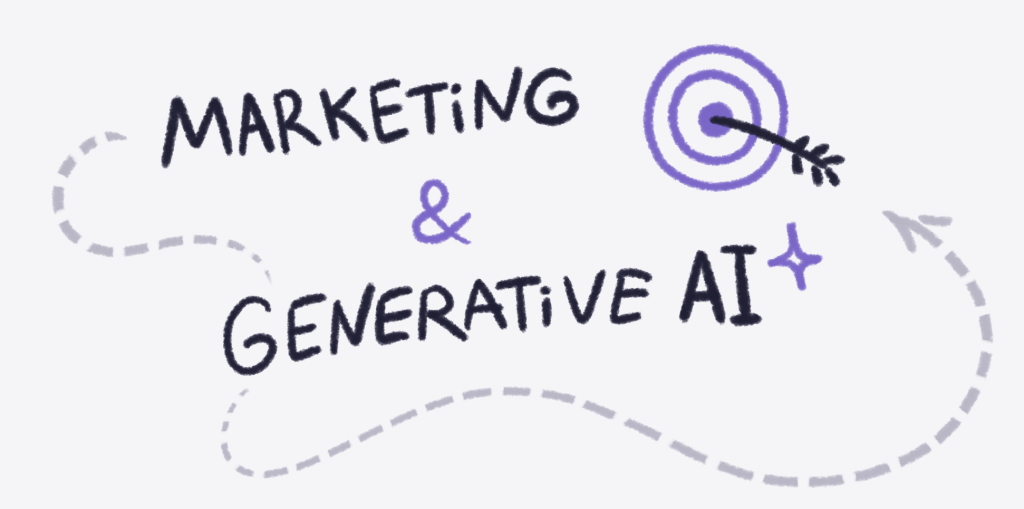The growing demand for great blog content
Does this sound like you or someone you know? You’ve been trying to get your blog started for the last year. Another month passes, and you just can’t quite get it together.
But, you know, all of these AI marketing tools, including those for bloggers, have made blogging easier than ever. There are templates, platforms, articles, and tutorials to guide you. Blog writing software can also help streamline your content strategy.

The hardest parts of blogging are getting started, then staying consistent and relevant.
- The tools and platforms have made it easy.
- Think about how to brand your blog.
- Part of website or standalone?
- Identify domain and host like GoDaddy, with yearly fee.
- Commit to a weekly blog and set aside time each week to write.
- Get used to being on the lookout for topics–headlines, media, other bloggers. Don’t be afraid to steal ideas.
- Develop traffic, then monetize.
- Finally, regular blogging is an essential part of every SEO strategy.
Third most popular content marketing strategy
Blogging is more than creating content; it’s relational. Interacting with readers, developing a brand and a voice to create a following. Ultimately, your blog should be generating revenue–either from affiliate marketing or through users reading your articles and buying your products or contracting for your services. It starts with generating great blog content and building an audience through effective blog content marketing. A solid blog strategy is key.
Key takeaways
Writing blog posts that rank on Google, have a dedicated readership and produce revenue. This is not the impossible dream; it’s attainable by following these easy steps to create blog content strategy. These blog marketing tips will help you develop an effective blog marketing plan.
Step 1: Identify your niche. What can you write a lot about
Before thinking about blog topics, you need to identify your specialty. What topics can you write about consistently? Let’s get real. What’s a topic that you can write hundreds of blog posts about? It might be an industry niche that’s constantly evolving, so you’ll need to follow those changes and write about them. But that’s a good thing that will give you a steady flow of blog content ideas for your blog content plan.

Your niche should be big enough to allow for growth
A niche that’s big enough for growth but small enough to develop depth the depth that will position you as a topical authority. You don’t want to paint yourself into a corner—finding that you’ve exhausted your topic—there’s really nothing more you can/want to write about.
For example: My niche is AI Marketing Tools
That’s a pretty big topic that covers AI writers, plagiarism detectors, notetakers, data tools, presentation apps, CRMS, etc. This is a fiercely competitive market, which makes it exciting for a blogger. We’re really writing about the constant changes in an industry that’s on the move.
New and evolving apps and the aftereffects. An example is the emergence of ChatGPT. Since its rollout in November of 2022, the technology behind this AI writer has been adopted by numerous other apps, and it has had a significant effect on their performance—Writesonic, Zoho, Claude, etc. All have gotten a big boost from the ChatGPT engine.
Step 2: Sustain your blog
Calendar this time and treat it like a meeting you absolutely can’t reschedule.
Don’t be afraid to steal ideas
Look at other writers who are having success and get ideas from their blog posts.
Don’t be afraid to share your opinions
You’re on your way to becoming a topical authority, you’re becoming an expert.
Use AI blogging tools to create and plan your work, but always add your ideas and examples. This strategy guarantees that your blog content remains consistent and compelling. It’s also authentic. This is what readers are looking for and what AI content can’t provide.
Step 3: Setting blogging goals
Set defined goals for your blog to help guide your blog marketing strategy and content marketing efforts. A blog strategy template can be helpful for organizing your goals and plans.
Are you looking to establish topical authority by becoming a reputable expert? Or do you primarily focus on monetization via affiliate marketing and sponsored content?
You may even strive for both: establishing oneself as an expert and making revenue.
Clarifying your blog marketing strategy helps create your blog planning and track your progress.
Step 4: Branding your blog

Have you thought about how you want to brand your blog? Becoming a topical authority or niche leader require a focus.
Will it be a standalone site with its own identity or will it live on your website as part your business?
If you’re thinking about launching a new service or product that’s geared toward a new target audience, a separate, standalone blog may be the better choice. You won’t be constrained by the branding on your existing website.
If you’re trying to reach a younger audience through influencers and social media posts, the blog design may be completely different from what you’re used to.
An example: A marketing company that specializes in graphics/packaging, took on a new client, a cannabis company. This client represented a lot of work for them—branding, a comprehensive ad campaign, a new website and blog posts.
This was shortly after cannabis was legalized, and this product was still highly controversial. The company was afraid that some of its more conservative clients might object to their working with the cannabis company.
If the blog is about incorporating your existing brand into your current site, it will help strengthen your brand.
Wix is a great blog hosting platform. This screenshot demonstrates the dashboard view where you can see all of your blog posts, click and edit them.
Step 5: Building a successful blog: quality and commitment matter
A successful blog requires depth and substance. Short, 300-word posts fail to make an impact because they lack adequate keyword use and cohesion. Research popular blogs in your industry to learn what works.
If you’re an industry expert, this is your moment. Take advantage of it
I worked for a real estate agent with more than 30 years of experience, and I tried to get him to share that knowledge with a blog and a newsletter. I kept drafting up materials that were reflective of what he brings to each engagement, but he just wasn’t interested.
To stand out, commit to providing high-quality material regularly. Aim for at least one well-researched piece every week, preferably more. Consistency and quality are essential for establishing authority and engaging your audience successfully. Provide great headlines to capture attention.
Step 6: Choosing a domain
Domain Hosting
A successful blog requires depth and substance. Short, 300-word blog posts fail to make an impact because they lack adequate keyword use and cohesion. Research popular blogs in your industry to learn what works for your content marketing blog strategy.
If you’re an industry expert, this is your moment. Take advantage of it
I worked for a real estate agent with more than 30 years of experience, and I tried to get him to share that knowledge with blog posts and a newsletter. I kept drafting up materials that were reflective of what he brings to each engagement, but he just wasn’t interested.
To stand out, commit to providing high-quality blog content regularly. Aim for at least one well-researched piece every week, preferably more. Consistency and quality are essential for establishing authority and engaging your target audience successfully. Provide great headlines to capture attention.
Step 7: Keyword research, critical for successful blogging

I swear by Ahrefs—it’s a wonderful SEO tool, but it’s also expensive. For a low-cost option, consider Google Keyword Planner—it’s free and helps you find appropriate phrases for your blog content strategy. Keep in mind that it’s designed for ad campaigns. Google wants you to be doing PPC advertising because it makes an obscene amount of money—something like $100M/day on these. Avoid these ads—they’ve just gotten too expensive. Instead, focus on building sustainable SEO strategies like link building.
Digital Media: Keyword difficulty: 34 | Monthly traffic: 15K
If you’re writing about something in the AI, content marketing, digital media space, digital media, with keyword difficulty at 34 and monthly traffic at 15K, is a very good term to add to your blog posts.
Ahrefs keyword research app is the SEO tool I return to multiple times every day. Easy to use for keyword lookups, it has so many other functions that are useful for bloggers, making it one of the best SEO tools for bloggers.
This is a page from Google’s keyword ad planner. The keywords are in the lefthand column The table headings across the top give you the ranking scores and costs of each keyword. Examples below:
- Ecommerce SEO services gets between 1K-10K visitors/month. Currency is the Euro, low competition, 4.95-224.55 euros.
- Attorney SEO services gets 12-100 visitors/month. Low competition, 11.50-44.12 euros.
If you’re writing about something in the AI, content marketing, digital media space, digital media, with keyword difficulty at 34 and monthly traffic at 15K, is a very good term to add to your blogs.
Ahrefs keyword research app is the tool I return to multiple times every day. Easy to use for keyword lookups, it has so many other functions.

This is a page from Google’s keyword ad planner. The keywords are in the lefthand column The table headings across the top give you the ranking scores and costs of each keyword. Examples below:
- Ecommerce SEO services gets between 1K-10K visitors/month. Currency is the Euro, low competition, 4.95-224.55 euros.
- Attorney SEO services gets 12-100 visitors/month. Low competition, 11.50-44.12 euros.
Step 8: Use images, videos, and audio
Make your blog content multimodal to keep people interested. Use audio, video, and image integration to create engaging and exciting content.
- Use tools like Canva for graphics and platforms like Adobe Premiere or CapCut for video editing.
- Short video clips, infographics, and audio snippets can break up text and provide a richer experience, capturing attention and enhancing your message.
Don’t believe me? Here’s some data on the growth of blogging
- Blogging is still one of the most effective content marketing strategies, with more than 600M blogs already online.
- More than 7.5M blogposts are created daily, reaching a massive audience of more than 409M people who see 20B pages on WordPress each month
- Since 2015, blogging as expanded by 12%. The number of bloggers is predicted to climb by up to 40% by 2028, indicating growing popularity.
- WordPress is the most popular blogging platform, powering 43% of all websites and hosting 60M blogposts.
- Most bloggers (>50%) are between 21 and 35.
- Blogposts are now the most popular content type; 80% of bloggers report positive marketing effects–particularly among those who blog regularly.
From idea overload to blogging success: Emma’s story
Not so fast. Emma ran out of topics
Branding and building a community
“The hardest part was getting started”
One more thing: Think multimodal
Conclusion
In 2024, starting a blog and writing an article is easier than it seems if you plan it carefully. Pick the right topic, choose a memorable domain, and focus on writing articles that connect with your readers to build a unique brand.
Don’t forget, the challenge isn’t just about starting; it’s also about keeping your blog interesting with new topics and consistently engaging content. Make sure your blog ideas match your goals—whether that means growing your brand, exploring affiliate marketing, or establishing your expertise.
Remember to stay committed and updated on what’s popular in your niche. Use your unique voice. With proper planning and dedication, your blog can become a sustainable platform for establishing authority, attracting traffic, and achieving your blogging goals.
Frequently Asked Questions (FAQs)
How do I choose a niche for my blog?
Choose a niche that aligns with your interests and has market demand. It should be broad enough for varied blog topics but focused enough to build a loyal audience.
What is branding, and why is it important?
Branding is your blog’s identity, including design, voice, and message. It helps differentiate you, build trust, and attract readers.
How can I keep my blog topics fresh?
Use tools like Google Trends for new ideas, stay updated on industry trends, and engage with your audience to understand their interests.
Which platform should I use?
WordPress is flexible and popular, but Wix and Squarespace are also great for beginners.
How do I drive traffic to my blog?
Optimize for SEO, promote on social media, and publish valuable content regularly.
How often should I post?
Post at least once a week to keep your audience engaged and your blog visible.
Can I make money from blogging?
Yes, through affiliate marketing, ads, sponsored content, or selling products. Build traffic first, then monetize.
Janet Peischel is a writer and SEO specialist who lives in Sonoma, CA. She’s helping her clients sunset their expensive PPC ad campaigns and develop sustainable SEO strategies. Contact Janet for a free SEO audit. Jumpstart your SEO strategy today! 510.292.1843


